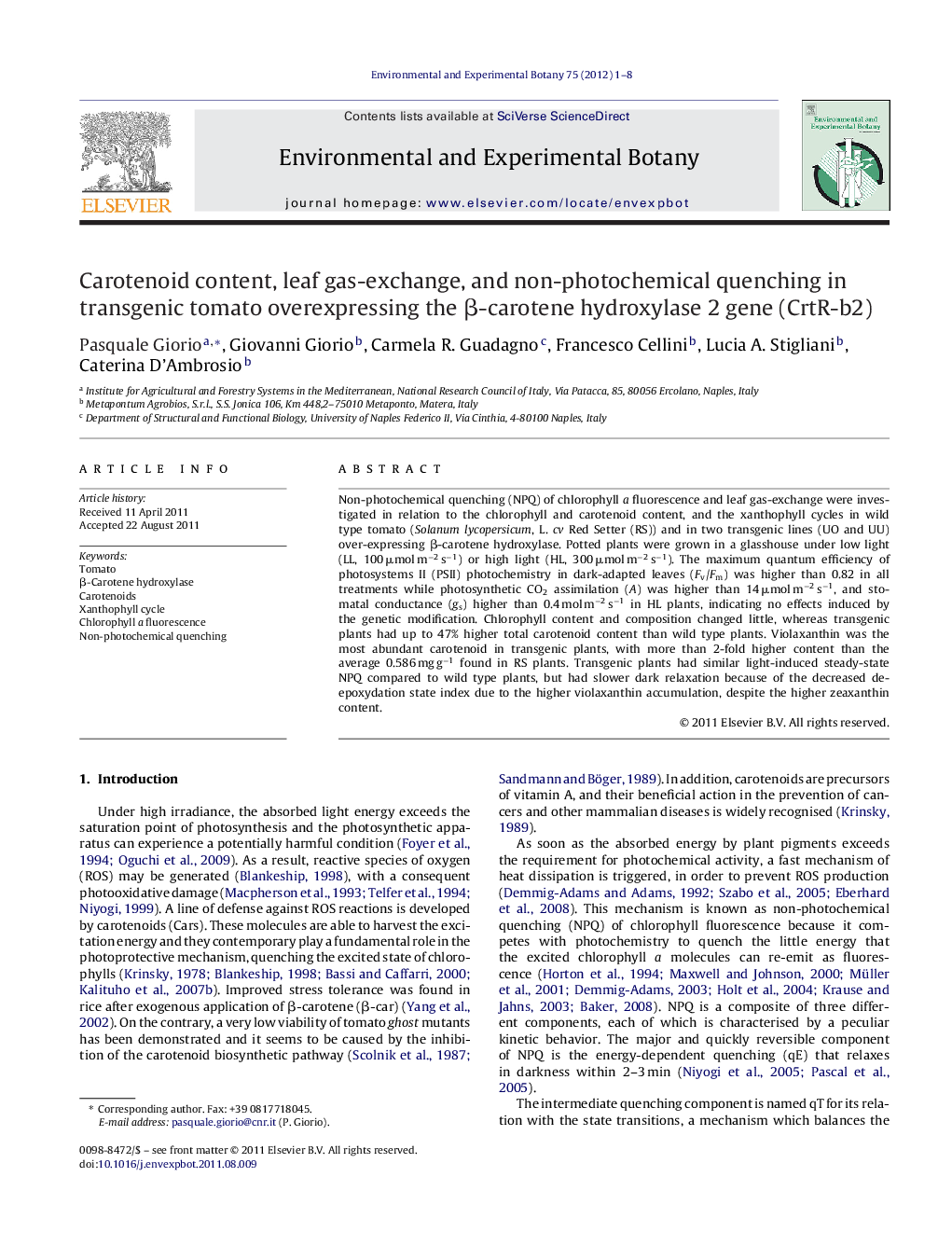| کد مقاله | کد نشریه | سال انتشار | مقاله انگلیسی | نسخه تمام متن |
|---|---|---|---|---|
| 4554826 | 1628102 | 2012 | 8 صفحه PDF | دانلود رایگان |

Non-photochemical quenching (NPQ) of chlorophyll a fluorescence and leaf gas-exchange were investigated in relation to the chlorophyll and carotenoid content, and the xanthophyll cycles in wild type tomato (Solanum lycopersicum, L. cv Red Setter (RS)) and in two transgenic lines (UO and UU) over-expressing β-carotene hydroxylase. Potted plants were grown in a glasshouse under low light (LL, 100 μmol m−2 s−1) or high light (HL, 300 μmol m−2 s−1). The maximum quantum efficiency of photosystems II (PSII) photochemistry in dark-adapted leaves (Fv/Fm) was higher than 0.82 in all treatments while photosynthetic CO2 assimilation (A) was higher than 14 μmol m−2 s−1, and stomatal conductance (gs) higher than 0.4 mol m−2 s−1 in HL plants, indicating no effects induced by the genetic modification. Chlorophyll content and composition changed little, whereas transgenic plants had up to 47% higher total carotenoid content than wild type plants. Violaxanthin was the most abundant carotenoid in transgenic plants, with more than 2-fold higher content than the average 0.586 mg g−1 found in RS plants. Transgenic plants had similar light-induced steady-state NPQ compared to wild type plants, but had slower dark relaxation because of the decreased de-epoxydation state index due to the higher violaxanthin accumulation, despite the higher zeaxanthin content.
► We studied transgenic tomato over-expressing β-carotene hydroxylase.
► Transgenic tomato had more than 2-fold higher Vio content than wild-type plants.
► Genetic modification did not affect either gas-exchange or Fv/Fm.
► Light-induced steady-state NPQ was unaffected, but had a slower dark relaxation.
► The decreased DES was due to a much higher Vio despite the higher Zea content.
Journal: Environmental and Experimental Botany - Volume 75, January 2012, Pages 1–8